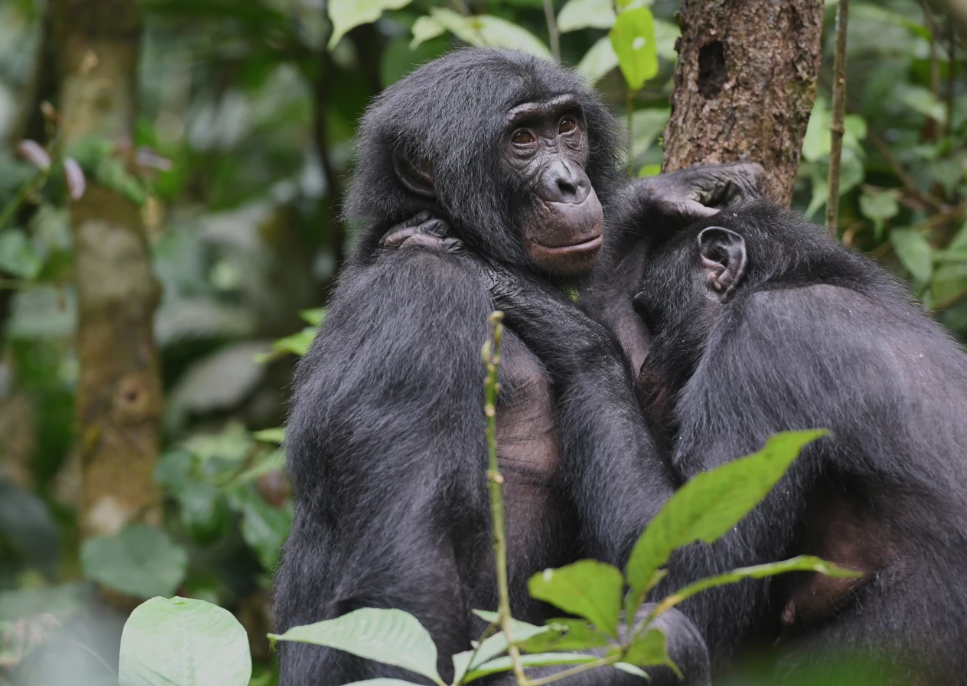Female bonobos have been observed using their strength in numbers to fend off males in the wild, according to a new study. Despite male bonobos being physically larger and stronger, female bonobos live in predominantly female-led societies, and scientists have long wondered why this is the case. A new study, based on 30 years of observations in the Congo — the only place bonobos live in the wild — sheds light on how these female bonobos use their sisterhood to assert power.
The study found that groups of female bonobos could drive males out of trees and secure food for themselves. Additionally, females that formed larger groups were more likely to rise in social rank within their community. This behavior challenges the common notion that physical strength alone determines dominance in animal societies.
Martin Surbeck, a researcher from Harvard University and author of the study, explained that female bonobos’ numbers were a key factor in overcoming male physical strength. This strategy is rare in the animal kingdom, with spotted hyenas also employing group dynamics for dominance.
Female bonobos even joined forces with individuals they were not closely related to, supporting one another against male aggression and strengthening their social position. According to Laura Lewis, a biological anthropologist at the University of California, Berkeley, these findings highlight how coalitions, like those seen in bonobos, may have been used by humans and their ancestors to build and maintain power over millions of years.















